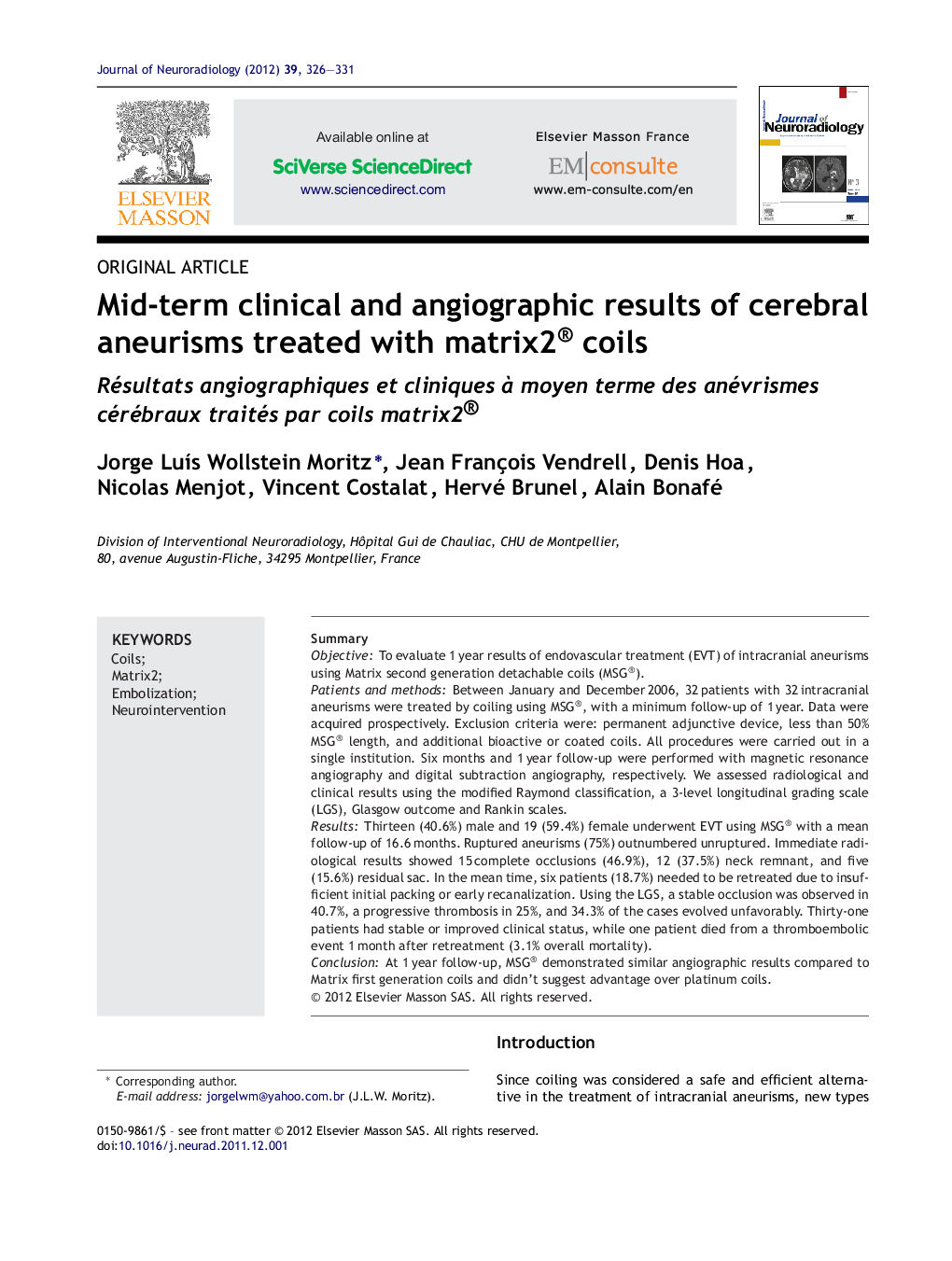| Article ID | Journal | Published Year | Pages | File Type |
|---|---|---|---|---|
| 4234050 | Journal of Neuroradiology | 2012 | 6 Pages |
SummaryObjectiveTo evaluate 1 year results of endovascular treatment (EVT) of intracranial aneurisms using Matrix second generation detachable coils (MSG®).Patients and methodsBetween January and December 2006, 32 patients with 32 intracranial aneurisms were treated by coiling using MSG®, with a minimum follow-up of 1 year. Data were acquired prospectively. Exclusion criteria were: permanent adjunctive device, less than 50% MSG® length, and additional bioactive or coated coils. All procedures were carried out in a single institution. Six months and 1 year follow-up were performed with magnetic resonance angiography and digital subtraction angiography, respectively. We assessed radiological and clinical results using the modified Raymond classification, a 3-level longitudinal grading scale (LGS), Glasgow outcome and Rankin scales.ResultsThirteen (40.6%) male and 19 (59.4%) female underwent EVT using MSG® with a mean follow-up of 16.6 months. Ruptured aneurisms (75%) outnumbered unruptured. Immediate radiological results showed 15 complete occlusions (46.9%), 12 (37.5%) neck remnant, and five (15.6%) residual sac. In the mean time, six patients (18.7%) needed to be retreated due to insufficient initial packing or early recanalization. Using the LGS, a stable occlusion was observed in 40.7%, a progressive thrombosis in 25%, and 34.3% of the cases evolved unfavorably. Thirty-one patients had stable or improved clinical status, while one patient died from a thromboembolic event 1 month after retreatment (3.1% overall mortality).ConclusionAt 1 year follow-up, MSG® demonstrated similar angiographic results compared to Matrix first generation coils and didn’t suggest advantage over platinum coils.
